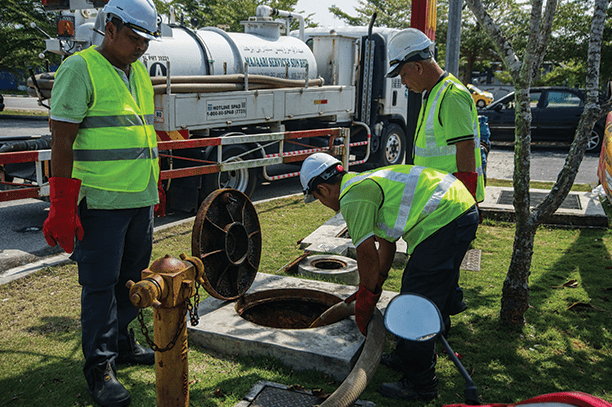In Molalla, Septic system design refers to the process of planning and creating a sewage treatment system that is independent of a centralized sewer system. It involves determining the appropriate size and configuration of the system based on factors such as the number of users, soil conditions, topography, and local regulations.
A septic system is designed to treat and dispose of wastewater generated from households or small-scale commercial buildings. It typically consists of a septic tank and a drainfield.
Factors to Consider when Designing a Septic System for Future Growth
1. Number of users or occupants
The number of users or occupants is a critical factor in the septic system design in Molalla. The size and capacity of the system will depend on the anticipated water usage and waste production. More users or occupants will generate larger volumes of wastewater, requiring a larger septic tank and drainfield. It is important to consider future growth projections to make sure that the septic system can accommodate increased usage without compromising its performance.
2. Type of building or facility
The type of building or facility being served by the septic system is another crucial consideration. Residential properties have different wastewater characteristics compared to commercial or industrial facilities. For instance, a restaurant or a healthcare facility may generate more wastewater and potentially introduce additional contaminants. The design must account for the specific demands and potential variations in wastewater composition associated with the building or facility type.
3. Size and capacity of septic system
The size and capacity of the septic system in Molalla depend on factors such as water usage, waste production, and local regulations. Determining the appropriate tank size and drainfield dimensions is vital to ensure sufficient treatment and disposal capacity. A professional septic system designer can assess these factors and recommend a system size that meets current needs while allowing for future growth. Oversizing the system beyond the immediate requirements can help accommodate increased usage without necessitating costly modifications later.
4. Soil and groundwater conditions
Soil and groundwater conditions greatly influence the design of a septic system in Molalla. Soil permeability determines how well the effluent can be absorbed and treated as it percolates through the drainfield. The type of soil, its texture, and the depth of groundwater all impact the system’s functionality. A soil analysis and site evaluation are crucial to assess these conditions accurately. In some cases, modifications such as installing additional treatment components or utilizing alternative technologies may be necessary to overcome challenging soil or groundwater conditions.
5. Local regulations and permitting requirements
Compliance with local regulations and permitting requirements is essential when designing a septic system in Molalla. Each jurisdiction may have specific guidelines, setbacks, or design standards that must be followed. These regulations aim to safeguard public health, protect the environment, and prevent contamination of water sources. Engaging a professional designer who is familiar with the local requirements ensures that the septic system design meets all necessary criteria and can be approved by the relevant authorities.
Types of Septic Systems to Consider for Future Growth or Expansion
1. Conventional septic systems: These systems are quite common and traditional types of septic systems. They consist of a septic tank that collects and treats wastewater before it is discharged into a drain field. Conventional systems are relatively simple and cost-effective, making them popular for residential properties.
2. Alternative septic systems: These systems are designed to overcome the limitations of conventional septic systems. They use innovative technologies and methods to enhance treatment and disposal processes. Alternative systems include aerobic systems, mound systems, and sand filters. They are suitable for properties with challenging soil conditions or limited space.
3. Advanced treatment systems: These systems offer a higher level of wastewater treatment compared to conventional and alternative systems. They use advanced technologies like activated sludge, media filters, or disinfection units to remove additional contaminants from the wastewater. Advanced treatment systems are ideal for properties that require strict environmental standards or have sensitive water bodies nearby.
Each type of septic system in Molalla has its own advantages and considerations, so it’s important to evaluate the specific needs and constraints of your property when planning for future growth or expansion by hiring a septic system service in Molalla.
Design Considerations for future growth or Expansion
1. The capacity of the septic tank and drain field: Ensure that the septic tank and drain field have sufficient capacity to accommodate future growth in wastewater volume.
2. Soil suitability and absorption rate: Evaluate the soil’s ability to absorb and treat wastewater effectively, considering factors such as soil composition, percolation rate, and depth to groundwater.
3. Proper sizing of components and pipes: Size the septic tank, distribution box, and pipes appropriately to handle increased wastewater flows and avoid overloading the system.
4. Proper placement of septic system components: Position the septic tank, drain field, and other components in suitable locations that allow for easy access, maintenance, and future expansion if needed.
5. Location of expansion area: Identify and designate an area for potential future expansion of the septic system, ensuring adequate space is available for additional components or a larger drain field if required.
Contact American On-Site Septic
In conclusion, when considering future growth or expansion of septic systems, it is crucial to evaluate various factors and make informed decisions. Understanding the capacity of the septic tank and drain field, soil suitability and absorption rate, proper sizing of components and pipes, as well as the placement of septic system components are all essential considerations.
With the assistance of our experts at American On-Site Septic, you can plan for the future and ensure the long-term effectiveness and functionality of your septic system. Call us today to schedule an appointment.






